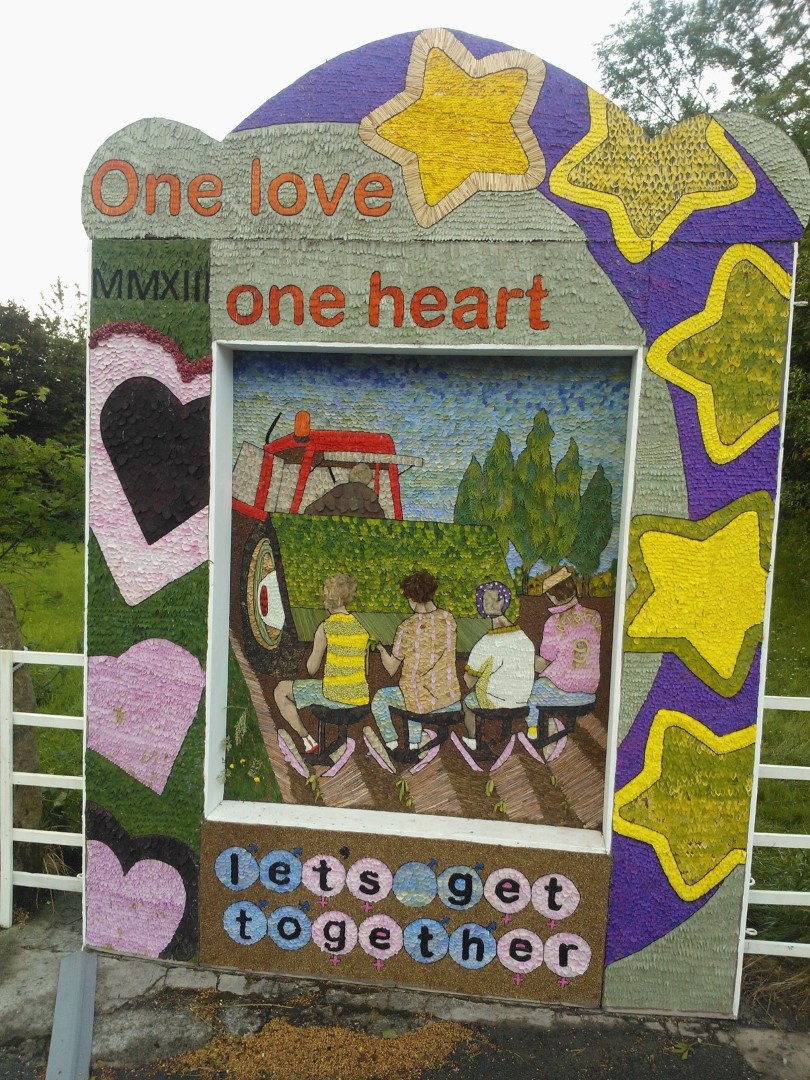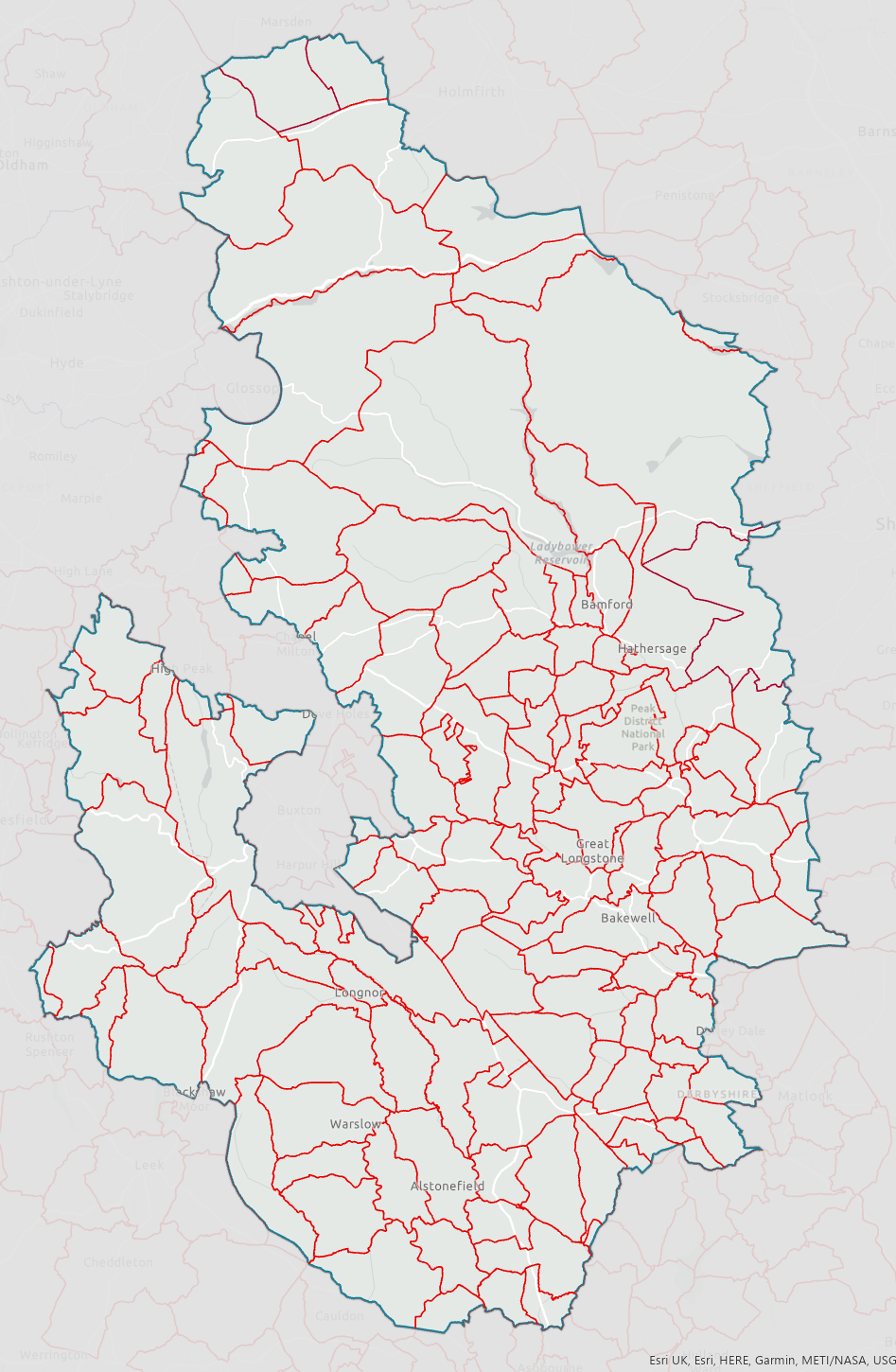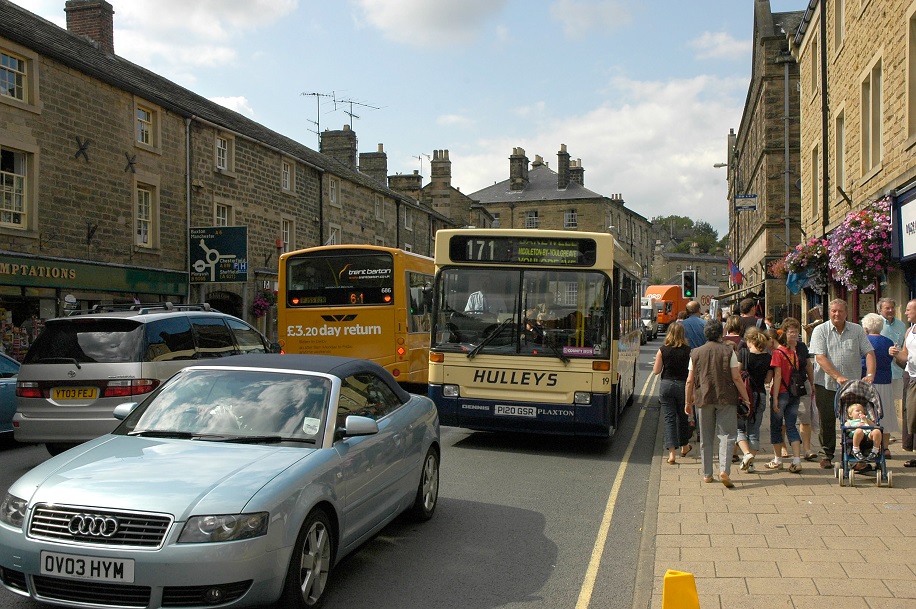Characteristic settlements with strong communities and traditions
# Communities
The NPMP acknowledges that a sustainable community relies on a mix of social, economic and environmental factors. Access to services, housing and employment can be challenging in the national park.
Therefore, the management plan supports new models for service delivery and the provision of locally needed housing. These, together with a sense of community through taking part in traditional customs, local affairs and caring for the environment all contribute to creating thriving and sustainable communities.

# Parish Statements [1]
To evidence the contributing factors of ‘thriving and sustainable communities’, the Policy and communities Service is in the process of completing a suite of Parish Statements (89 in total) in consultation with parishes across the national park, specifically those which lie wholly or the majority of their population/area are located within the national park.

Map of Parish Boundaries in the PDNP (Contains OS data © Crown Copyright and database right 2019 | Ordnance Survey).
# Settlement Amenities

Each parish statement has a record of their amenities. These have been collated by the Policy and Community Service. The amenities in Calver are shown below as an example for the purposes of this report. The presence of amenities should be read in conjunction with access to essential services, as a parish may not have the service within the boundary of their parish but it may still be within close proximity. For example, Calver parish does not have a primary school, but Curbar parish primary school is within walking distance of the parish.
For information, the table below sets out service provision in 2010 compared to 2020. It is important to note that data from 2010 was based on the 63 named settlements in the Core Strategy. The 2020 data is based on parishes. Consequently there will be some variations which need more explanation, for example the number of community halls and playgrounds/playing fields has increased which is most likely due to being located within a parish but outside a named settlement.
| Amenity | 2010 (number) | 2020 (number) | Gain / Loss |
|---|---|---|---|
| Convenience shop | 34 | 28 | -6 |
| Post Office (inc visiting) | 33 | 28 | -5 |
| Primary School | 43 | 39 | -4 |
| Community Hall | 50 | 54 | 4 |
| Playground/Playing field | 42 | 48 | 6 |
| Industrial units | 15 | 18 | 3 |
| Distance to nearest GP | 1.5 miles (av) | 1.8 miles (av) | N/A |
| Within 1 mile of A or B road | 62 | 62 | 0 |
| Good public transport service | 44 | 45 | 1 |
| Public House | 54 | 54 | 0 |
| Post box | 63 | 63 | 0 |
| Church | 60 | 60 | 0 |
The largest service loss has been convenience stores and post offices. However, there has been a positive trend for widening the use of community buildings to facilitate post office services. Anecdotally, there is likely to have been a reduction in church services as the size of congregation’s fall and churches group together to provide services.
# Planning Permissions
The number of planning permissions is recorded for each parish. It can indicate how active a parish is in terms of investing in property/business etc. but this does not identify investment which does not require planning permission and so should be read with this limitation in mind. For information, for the 5 years up to 2019, the most planning permissions were granted in Bakewell (209), followed by Tideswell (77), Baslow and Bubnell (76) and Hathersage (74).
# Identified Issues raised by Parish Consultation
Many of the responses raised issues that they have within their parish. The most commonly occurring issue was surrounding parking, with 50% of parishes raising issue stating this as an issue. Following a similar theme the next issues most commonly raised were around busy roads and speed limits with 39% of those who raised issues referring to this. Also, 39% of those responding noted that the villages within their parish have issues surrounding visitor management. It is relevant that these three issues surrounding busy roads, speeding traffic and parking can be inter-related with visitor management issues.
The other issues that were raised by 17% of the parishes responding were public transport, broadband and the use of properties as holiday homes. Biodiversity issues were also raised, and this was also referenced to link to visitor pressures.
Other issues which were raised by parishes were concerns around the need for affordable housing, genuine farm diversification, lack of services, lack of open space, vandalism, dog fouling and flooding.
# The impact of COVID-19 restrictions on local communities of Peak District National Park [2]
Living in the area of the Peak District National Park had a positive impact for the majority of respondents on how they coped during lockdown. Also, a strong sense of attachment to the area was clear from the results with several people involved in volunteering activities to support the National Park.
The most negative impacts of the national COVID-19 restrictions were people being unable to socialise as before and many shops being closed. The most positive impacts were less traffic on the roads and fewer visitors in the Peak District.
The lower number of visitors due to the strict lockdown restrictions during the first wave of COVID-19 had positive impacts for locals especially with regards to the improvement of social relations with other locals and the feeling of connectedness to nature. However, those whose household income relies on tourism experienced a negative impact on their economic situation.